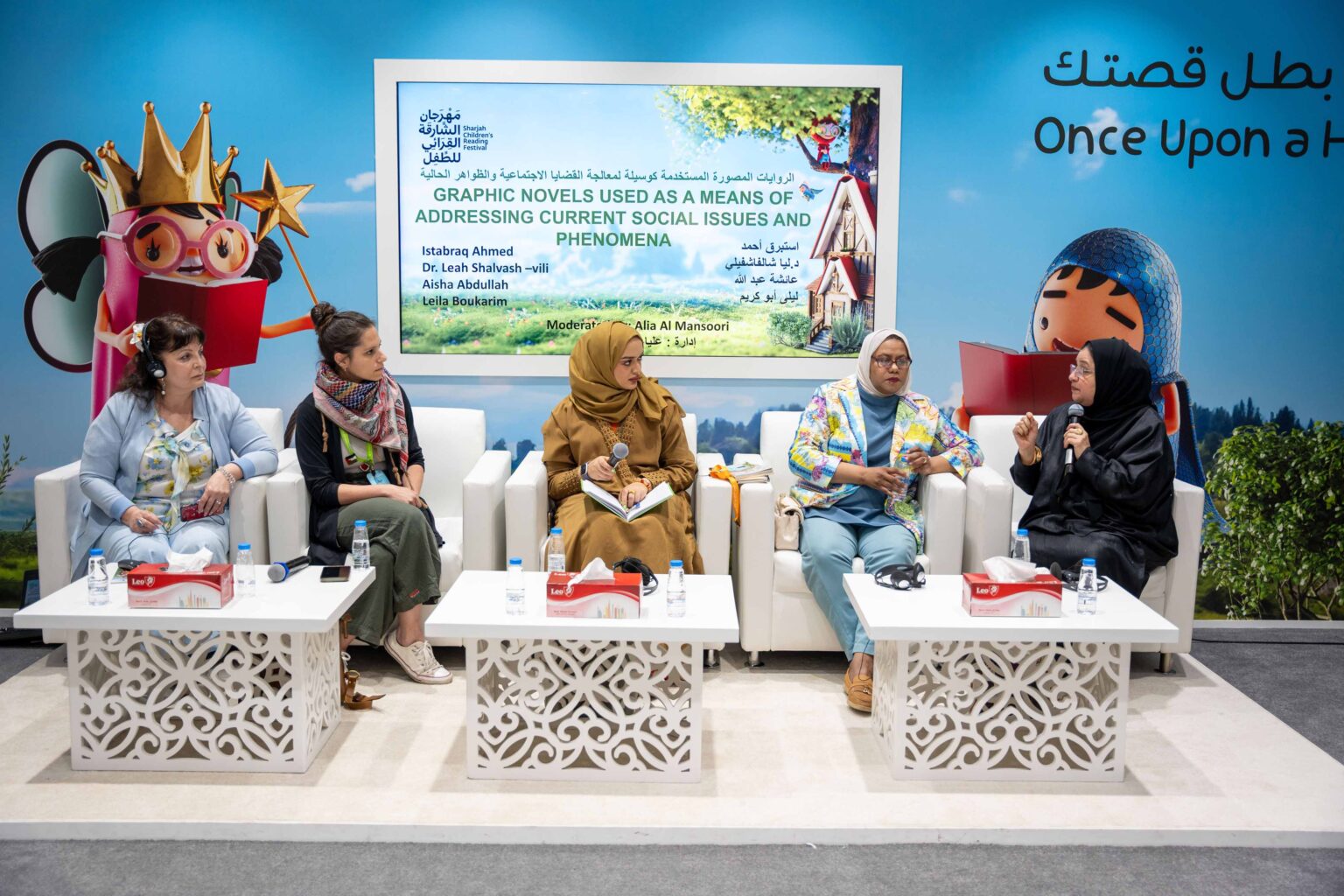The Sharjah Children’s Reading Festival (SCRF 2024) witnessed an engaging panel discussion on the power of graphic novels in addressing current social issues.
The discussion, moderated by Alia Al Mansoori, saw Georgian children’s author Dr Leah Shalvashvili and other writers and illustrators Istabraq Ahmed, Leila Boukarim and Aisha Abdullah, delve into the immense potential of novels with illustrations as a medium for showcasing diverse perspectives.
With the rise of graphic novels as a popular form of literature, the discussion highlighted how this visual medium has evolved to tackle a wide range of topics including diversity, inclusion, mental health and environmental awareness.
“We are witnessing a renaissance of graphic novels, with authors and illustrators using this medium to tackle important social issues in innovative ways,” said children’s writer and trainer Aisha Abdullah. “By combining compelling storytelling with captivating visuals, graphic novels have the power to engage readers of all ages and inspire meaningful conversations about the world around us. Children understand drawing more than writing, so when we are faced with certain causes, we can solve them with illustrations. As a teacher, I use artistic expressions to drive home messages we otherwise can’t with writing.”
Meanwhile, talking about how ‘glocal’ issues inspire illustrators and writers, Sudanese writer of Arabic books Istabraq Ahmed said: “Most writers write for their societies. You might think some causes they write about are localised but, often in reality, they may be a global issue. The depictions may be very local but messaging is often very global.”
Georgian children’s author Dr Leah Shalvashvili spoke about her most popular children’s book The Little Sparrow which tells the story of a sparrow born without one wing. “The sparrow’s mother made a wing out of straw and attached it to the sparrow. He grew up and became happy. This sparrow’s path to happiness is very interesting,” she said while explaining how simple illustrations often highlight important messages for children.
“My book has been published in 11 countries around the world and I have created some interesting projects on various social themes. Among them are books on the adaptation of children with disabilities in the social environment, adaptation of children with autistic spectrum in kindergarten and school, thanks to illustrations and drawings in my picture books.”
Leila Boukarim, who’s published a number of children’s books internationally including Lost Words: An Armenian Story of Survival and Hope, said it is crucial for parents and care-givers to talk to their children about ‘difficult things’ in an honest manner.
“It’s an instinct as parents to protect our children from harsh realities, but we can’t keep them away from the truth for long and ultimately they will find it. We have to make sure they aren’t shocked by their own discoveries. We want them to understand what’s happening, to be empathetic and brave when time comes. We often can’t tell them everything and so we have to find a balance through drawing and illustrations. It is our responsibility as parents to answer those questions in a way they can understand,” said the Lebanese-born, Berlin-based writer while referring to her inspiring picture book about the resilience of the Armenian people, based on a true family story.
The panel discussion also underscored the importance of incorporating graphic novels into educational curricula as a tool for promoting empathy, critical thinking, and social awareness among children and young adults.

